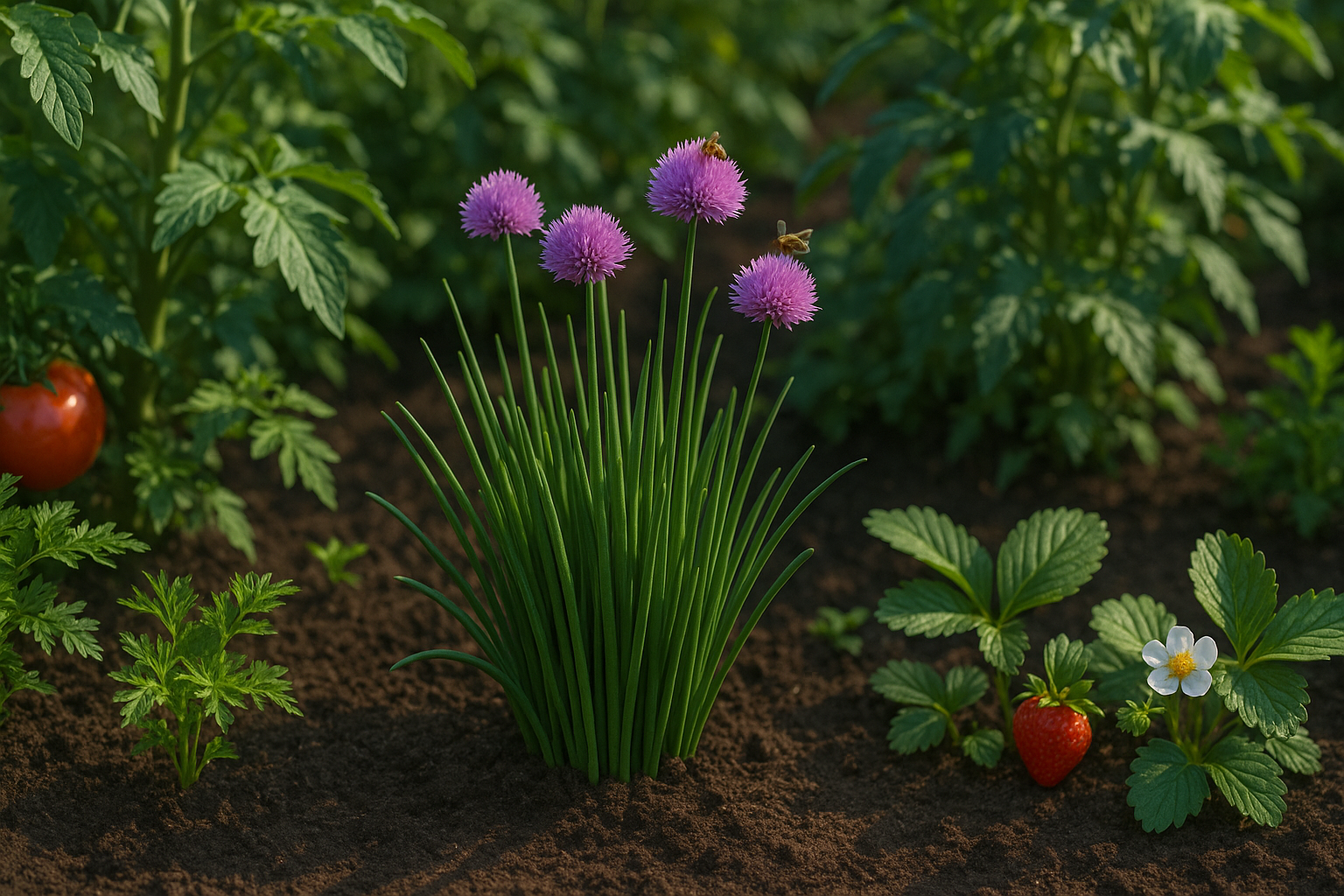Introduction to Companion Planting with Chives
Gardening enthusiasts know that the secret to a thriving vegetable plot often comes down to smart pairing—and that’s where chives companion plants make all the difference. Companion planting is a time-tested technique where certain plants are grown near each other to naturally boost growth, deter pests, and maximize harvests. With their oniony aroma and delicate green stems, chives are one of the most popular herbs for gardeners.
Not only are chives easy to grow and maintain—even in small spaces or pots—but their natural pest-repelling properties help safeguard your crops from aphids and beetles, all while attracting helpful pollinators like bees. Plus, they’re a culinary powerhouse, adding a fresh punch to everything from salads to scrambled eggs.
If you’re new to companion planting or looking to level up your garden, this article is packed with practical tips. We’ll walk you through the key benefits of pairing chives with other vegetables and flowers, highlight the best and worst neighbors for chives, and share simple strategies to make your garden more productive and healthy. Whether you’re a first-time gardener or a seasoned green thumb, you’ll find actionable advice to make the most out of companion planting with chives.
What Makes Chives Special for the Garden?
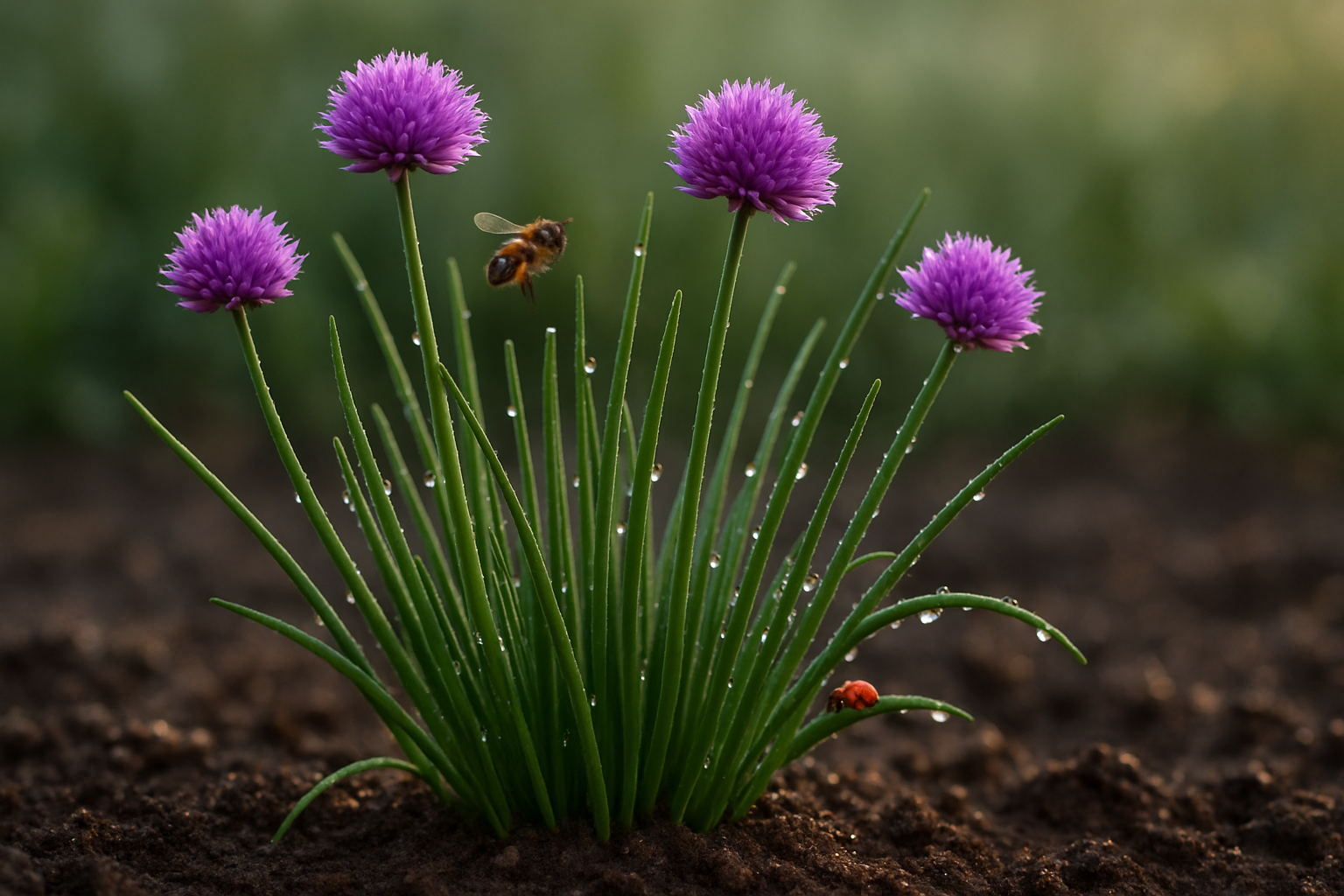
Chives stand out in the garden because they’re among the easiest, most forgiving herbs you can grow. These slender, grass-like perennials come back year after year, surviving even harsh winters thanks to their cold hardiness. Chives form tidy, clumping mounds that rarely take over a space, making them ideal for both garden beds and containers.
Their cheerful purple blooms aren’t just pretty; they also draw in bees and other essential pollinators, boosting the health and productivity of nearby crops. At the same time, chives naturally deter common pests like aphids and Japanese beetles with their subtle onion scent, serving as a built-in defense for your vegetables and flowers.
Another reason chives are a gardener’s favorite is their ability to thrive with minimal effort—they need only basic watering, tolerate a wide range of soils, and rarely suffer from disease. Whether you have a sprawling garden, a raised bed, or just a sunny spot on your balcony, chives fit right in; they’re hardy enough for most climates and compact enough for urban pots.
Plus, you can snip fresh leaves throughout the growing season for kitchen use, making them as practical as they are attractive. This combination of resilience, productivity, and beneficial effects on the garden ecosystem makes chives a must-have for gardeners of all skill levels.
“`html
Top Companion Plants to Grow with Chives
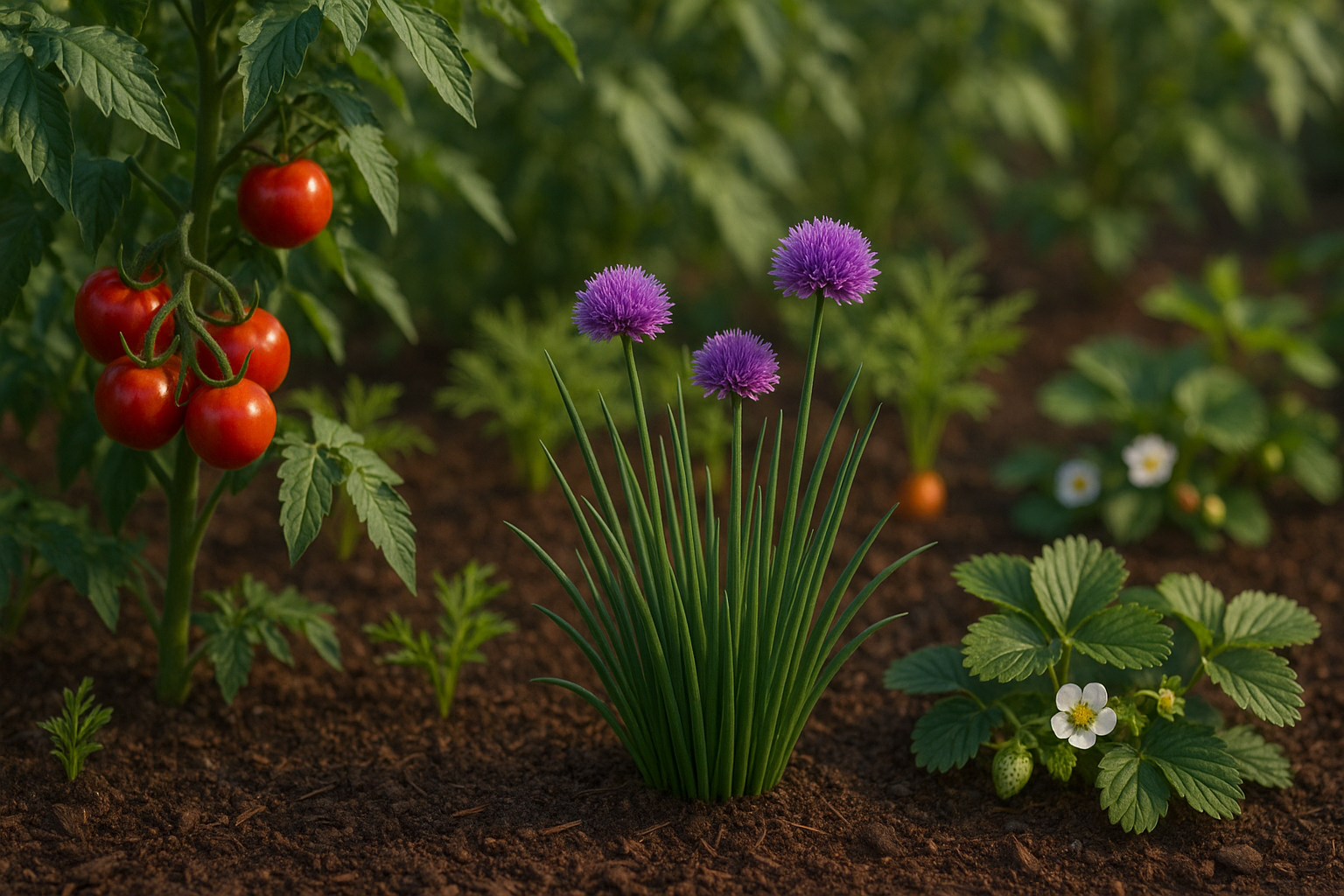
Chives are a superstar companion in the garden, offering a range of benefits to vegetables, fruits, and flowers alike. Planting chives alongside carrots can help repel carrot flies, while their natural pest-repellent properties also make them a great fit for tomatoes, deterring aphids and improving flavor.
Strawberries benefit too—chives help keep fungal diseases at bay, promoting healthier berries. In flower beds, chives are famously helpful for roses, acting as a barrier against black spot and aphids thanks to their sulfur compounds. Even cabbages and other brassicas appreciate the company of chives, as they deter cabbage moths and other pests.
For the best results, set chives near the base of companion plants, allowing 8 to 12 inches between chive clumps and other crops to prevent overcrowding. Chives thrive in full sun but will tolerate partial shade, making them versatile in various garden layouts.
Try growing them as a border plant along beds of carrots, tomatoes, or strawberries, or tuck a few clusters around rose bushes for an edible and beautiful accent. Chives are perennial, returning year after year, so choose a spot where their pest-fighting powers can be put to long-term use.
Water regularly, especially during dry spells, and trim the flowers to encourage leafy growth. Their compact habit makes them easy to slot into tight spots, so don’t hesitate to include them in mixed beds on patios or in containers near kitchen doors.
Whether you garden in a spacious yard or on a small balcony, chives offer big rewards when planted with the right companions.
“`
Plants to Avoid Planting Near Chives
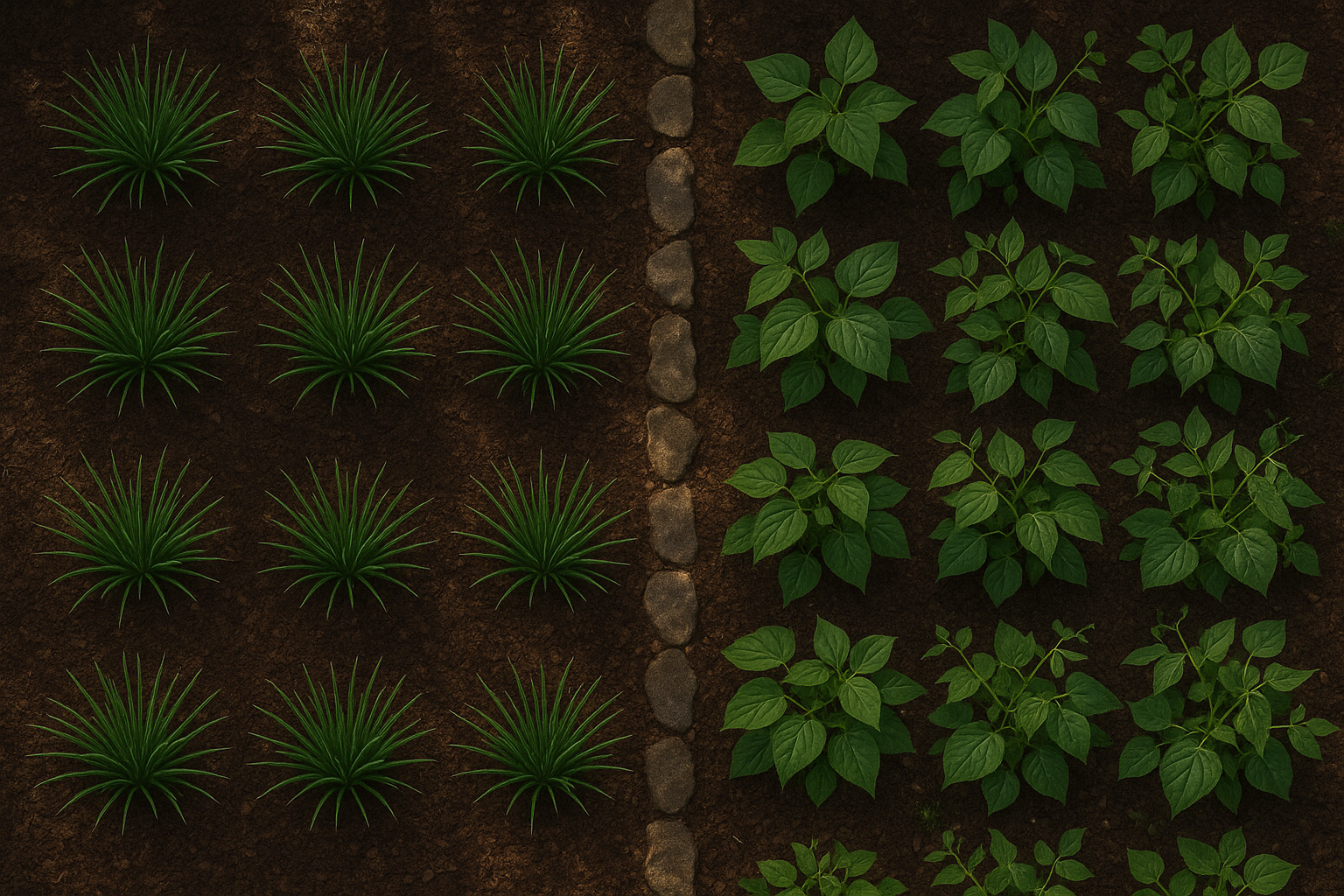
When planning your garden, it’s important to know which plants don’t get along well—and chives are no exception. For example, beans and peas should not be planted near chives due to their incompatibility.
Chives release natural compounds through their roots that can inhibit the growth of legumes like beans and peas, stunting their development and reducing yields. While legumes fix nitrogen in the soil—which usually benefits many plants—chives prefer stable soil conditions and may react poorly to the changes these crops bring.
Additionally, the strong aroma of chives, great for deterring pests like aphids, can sometimes interfere with the pollination of the delicate flowers on beans. To ensure a healthy harvest, keep beans and peas in a different part of the vegetable patch, ideally in raised beds or on the opposite end of the garden, away from your chive plants.
It’s also best to avoid planting chives near garlic and onions, fellow members of the allium family, since they compete for similar soil nutrients and space. This competition can lead to smaller bulbs and weaker plants.
Instead, try pairing beans and peas with crops like corn, cucumbers, or carrots, which are generally more compatible. By understanding plant incompatibilities, you’ll create a healthier, more productive garden while minimizing unnecessary competition and maximizing your harvest.
Why Chives Make Excellent Companions
Chives are more than just a flavorful addition to your kitchen—they’re a powerhouse companion plant in the garden. Their strong aroma and unique sulfur-containing compounds, like allyl sulfides, serve as natural pest repellents, deterring aphids, Japanese beetles, and even carrot flies without the need for chemical sprays.
Scientific studies have shown that these sulfur compounds disrupt the life cycles of certain harmful insects, making chives especially effective when planted alongside vulnerable crops like tomatoes, carrots, and roses. Gardeners frequently report healthier plants and fewer infestations when chives are interplanted, and some even use chopped chive foliage as a natural mulch around garden beds for added protection.
Beyond pest control, chives help boost soil health by attracting beneficial insects, such as pollinators and predatory wasps, which encourages greater biodiversity. Their roots can also improve soil structure and, when left to die back, add organic matter to the earth.
A 2015 study published in the Journal of Agricultural and Food Chemistry highlighted chives’ positive impact on microbial diversity in the soil, which is linked to improved nutrient availability and plant resilience.
Whether you’re aiming for a lush vegetable patch or a low-maintenance flower border, tucking chives among your plants is a science-backed way to foster a healthier, more harmonious garden ecosystem. Plus, their pretty purple flowers make a cheerful, edible garnish come spring.
How to Grow Healthy Chives for Companion Planting
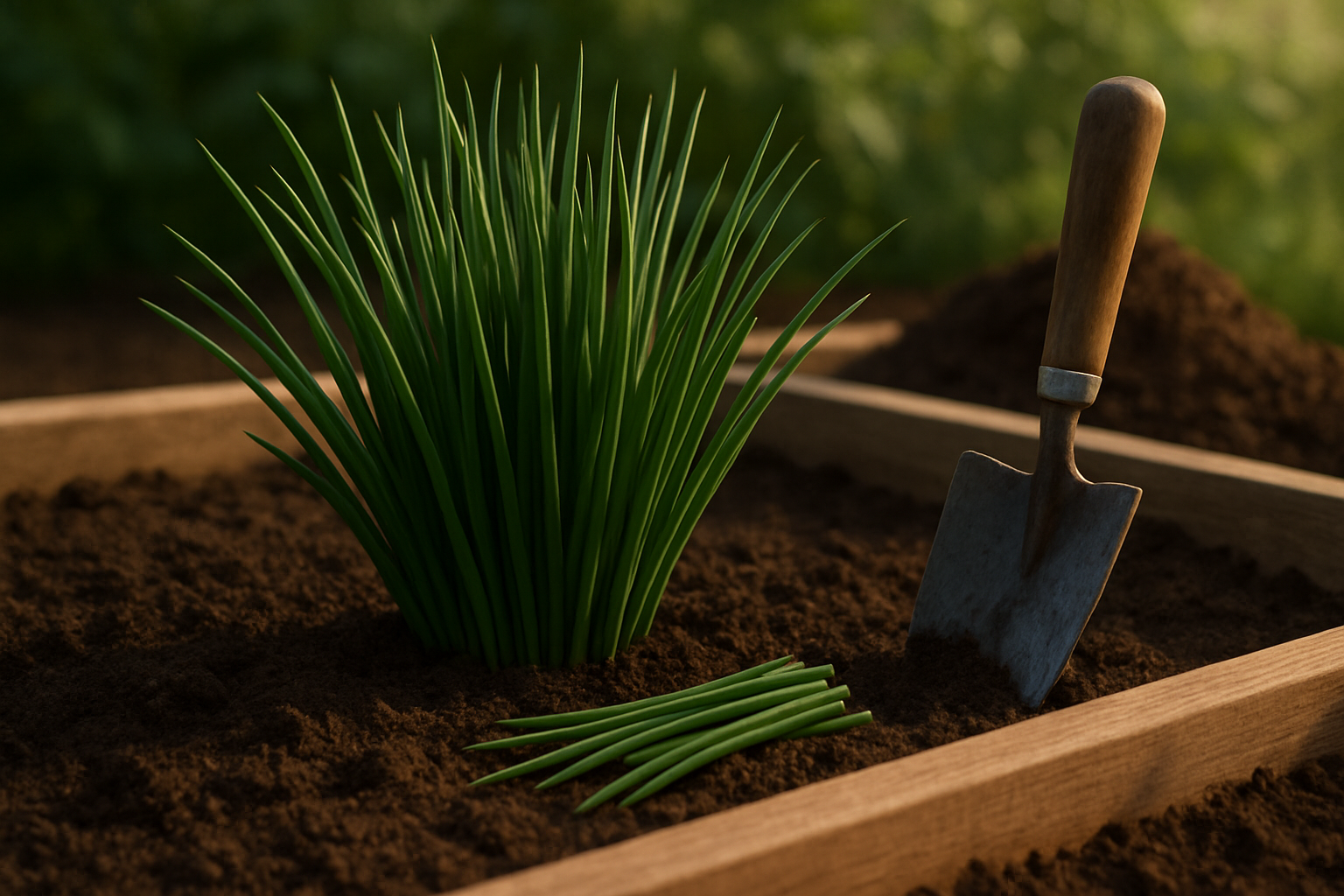
Growing healthy chives for companion planting is easy and rewarding with the right approach. Start by choosing a sunny spot with well-draining soil—chives thrive in both garden beds and containers.
Sow seeds directly outdoors in early spring, spacing them about 8 inches apart. If starting seeds indoors, transplant sturdy seedlings after the last frost. Alternatively, divide mature clumps in spring or fall by gently lifting and separating the roots—this not only produces new plants but also rejuvenates older patches.
Water chives regularly to keep the soil moist but avoid waterlogged conditions. Apply a thin layer of compost in early spring to boost growth. Snip chive leaves often to encourage continuous harvest, but avoid cutting more than a third of the plant at once so it can recover.
To harvest, use sharp scissors to cut leaves down to about 2 inches above the soil—this prompts fresh regrowth and keeps plants lush. For year-round productivity, bring a clump indoors before the first hard frost and place it on a sunny windowsill. Chives are hardy perennials but appreciate mulch or leaf cover if left outside through winter.
Every 2 to 3 years, divide your chive clumps to prevent overcrowding and maintain vigor. Integrating these easy care steps not only supplies your kitchen with fresh herbs all season but also supports surrounding plants—chives naturally repel pests like aphids and boost the health of carrots and tomatoes, making them an excellent companion in any garden.
Companion Planting Tips & Common Mistakes to Avoid
To make the most out of companion planting in your garden, start by designing your beds with both space and plant relationships in mind. Group compatible crops—such as pairing tomatoes with basil or lettuce with carrots—to maximize growth and naturally deter pests.
Rotate your crops each season to improve soil health and prevent disease. Avoid planting the same family in the same spot year after year, as this exhausts nutrients and attracts repeat pest problems.
It’s important not to overcrowd your beds; even beneficial neighbors like onions and carrots need room for air circulation and sunlight to thrive.
A common mistake is neglecting soil quality—test your soil and amend it with compost before planting. If you notice slow growth or yellow leaves, check for moisture issues. Overwatering can lead to root rot, while underwatering stresses plants.
Mulch lightly to retain moisture but avoid piling mulch against stems to prevent rot. Don’t rely solely on chives or other popular companions for pest control—use row covers, hand-pick pests, and increase biodiversity by including flowering herbs that attract predatory insects.
Troubleshoot problems like mold or mildew by spacing plants further apart and watering early in the day so leaves dry quickly.
Companion planting isn’t just about proximity; it’s about planning, observing, and continually adapting your approach for a healthier and more resilient garden.
Conclusion & Quick Reference Table
Companion planting with chives offers a natural way to boost your garden’s productivity and health. Chives help deter pests, attract pollinators, and improve the flavor and growth of nearby plants. By experimenting with chive companions, you may discover unique benefits tailored to your own garden. Don’t be afraid to try new combinations and observe what works best; gardening is all about learning and adapting!
Quick Reference Table
| Compatible Plants | Incompatible Plants |
|---|---|
| Carrots | Beans |
| Tomatoes | Peas |
| Roses | |
| Strawberries | |
| Lettuce |
